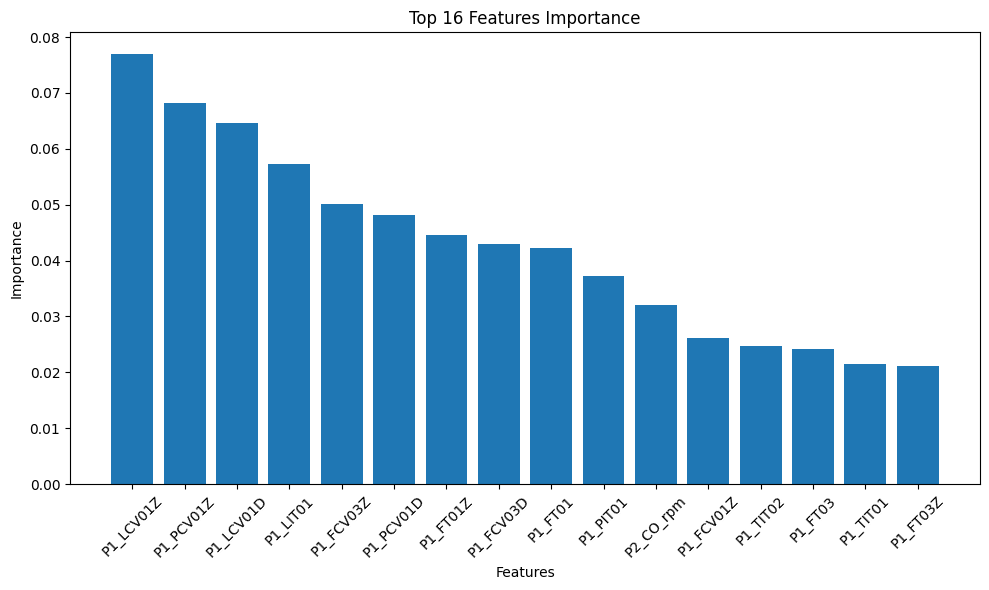- The paper presents a novel quantum GRU-GAN that integrates quantum variational circuits and Gaussian uncertainty to enhance anomaly detection in complex time-series data.
- It employs advanced techniques like Successive Data Injection and a composite loss function combining Wasserstein loss and KL-divergence for training stability and accurate uncertainty estimation.
- The model achieved a TaF1 score of 89.43% on the HAI dataset and demonstrated effective deployment on IBM quantum hardware, highlighting its real-world scalability and robustness.
Quantum Gated Recurrent GAN with Gaussian Uncertainty for Network Anomaly Detection
Introduction
The paper introduces an innovative framework for network anomaly detection using a Quantum Gated Recurrent Unit (QGRU)-based Generative Adversarial Network (GAN). This approach leverages quantum computing's potential to enhance the generative and predictive capabilities of traditional GANs by incorporating quantum-enhanced models. By combining Variational Quantum Circuits (VQCs) and Successive Data Injection (SuDaI) techniques, the model tackles the challenges of anomaly detection in complex time-series data.
The unique construction of this architecture allows it to propose a probabilistic description of the next expected state, integrating uncertainty directly into the model through a Gaussian distribution parameterized by quantum circuits. This probabilistic modeling helps improve detection accuracy, especially in scenarios with evolving data distributions or scarce labeled anomalies.
Model Architecture
The system is rooted in an advanced hybrid architecture that includes classical preprocessing, quantum variational circuits, and post-processing layers. Each Hybrid Quantum Layer (HQL) receives input processed into a lower-dimensional latent space, subsequently encoded into quantum circuits using SuDaI. This enables the quantum model to efficiently handle high-dimensional data by utilizing limited quantum resources.
The model's core, a QWGAN, integrates QGRUs to capture temporal dependencies between data points effectively. The quantum circuit's role is crucial for enabling the GAN's generator to produce sample predictions within a probabilistic framework, elaborated through a reparameterization trick to derive samples from the modeled Gaussian distribution.

Figure 1: Top 16 Feature Importances ranked by Gini criterion. These features were selected for their strong relevance to anomaly detection and used as model inputs to reduce dimensionality.
Training and Evaluation
The model employs a composite loss function encompassing a Wasserstein loss for adversarial training stability, a KL-divergence to encourage realistic Gaussian parameter estimation, and a variance penalty to control prediction certainty. These objectives ensure that the generator can produce predictions with realistic uncertainty estimates while faithfully mimicking the real data distribution.
The approach was benchmarked using the HAI dataset, which presents a diverse array of network activities and includes both benign scenarios and staged attacks. The model achieved a superior time-series aware F1 score (TaF1) of 89.43%, significantly outperforming both classical and existing quantum models.
Deployment and Real-World Application
Subsequently, the trained model was deployed on IBM's quantum hardware, proving that the quantum components could function despite the noise prevalent in such environments. The incorporation of noise during simulation training allowed the quantum-enhanced model to exhibit robust performance and scalability to real-world settings, indicating its readiness for deployment in real-time anomaly detection tasks.

Figure 2: Scatter plot of scaled mean log-variance, with ground-truth anomalies highlighted by red square outlines.
Anomaly Detection Mechanics
The paper details a comprehensive anomaly detection strategy, utilizing a multi-stage process to confirm anomalies. The initial step involves checking deviations via an interval-based gating mechanism, while further analysis is performed using reconstruction errors and critic feedback to compute anomaly scores. This efficiently reduces false positives by relying on composite scoring metrics only when necessary.



Figure 3: Anomaly score visualizations under different training-testing configurations. Each plot shows the detected anomaly scores (blue) against ground-truth events (red). The model trained on a noisy simulator exhibits strong sim-to-real transfer.
Conclusion
The presented Quantum Gated Recurrent GAN framework marks a significant advancement in the integration of quantum computing into anomaly detection systems. By combining quantum mechanics with advanced generative adversarial models, this work broadens the applicability of quantum computational advantages to complex, temporally dynamic problems common in network security.
The promising results on both simulated and real quantum hardware demonstrate the model's potential for real-world applications, encouraging further exploration of quantum-enhanced architectures for machine learning tasks.
Future Directions
This work creates pathways toward scalable quantum solutions for real-time monitoring and security in industries reliant on sensitive time-series data. As quantum hardware continues to evolve, such integrated frameworks may pave the way for more efficient and scalable solutions in anomaly detection and beyond. Continued efforts should focus on improving quantum circuit design for larger scales and reducing noise impacts on quantum computations, ensuring further robustness and applicability.




